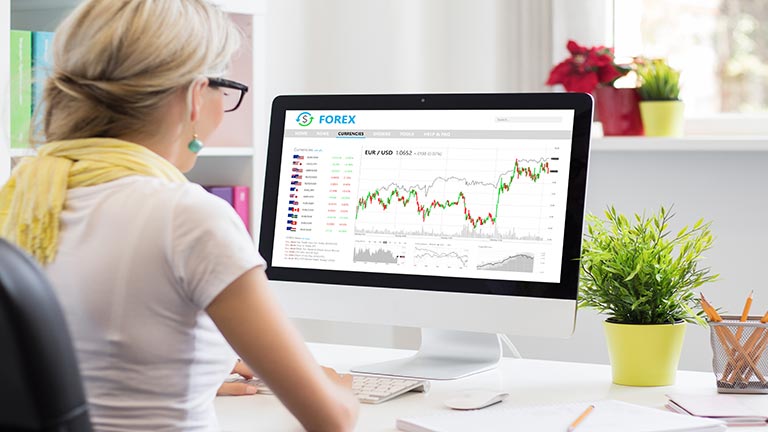How Can I Buy Shares without a Broker?

By Dale Gillham

Buying shares without a broker can be challenging, as brokers typically act as intermediaries between investors and the stock market. However, there are a number of alternative options that investors can consider, which I highlight below.
In discussing these options, I will also share what you need to be aware of if you choose to buy shares without a broker, as you want to ensure you are protecting your capital each time you put your hard-earned money in the stock market.
What is an initial public offering?
An initial public offering (IPO) is when a private company decides to become a public company by selling its shares to investors to raise capital on the stock exchange, such as the Australian Securities Exchange (ASX).
The capital is typically used to expand and grow the company's earnings, while in some cases, it is also used to pay down debt.
Are IPOs safe to invest in?
While an IPO can be exciting, as you can potentially ride the upside if the company does well, it’s not easy, even for a savvy investor, to pick which stocks are likely to do well. That’s why the risk of investing in an IPO is very high because, typically, less than 50 per cent of them are successful.
In fact, many companies trade higher on euphoria when they initially list before investors sell out on the same day or within a few weeks of the company listing to make some quick gains. This tends to drive the share price down, which, in certain cases, is below the listing price.
In my experience, the chances of your investment being worth less than what you initially paid in the first 12 months is a very real possibility. There are also cases where stocks have never recovered back to their listing price, no matter how much an investor hopes and prays.
Should I invest in an IPO?
Investing your money in a company that hasn’t been tested on the market is an unnecessary investment risk. Not only are you risking your capital, but you risk losing any potential gains you have generated from quality companies you hold in your portfolio that have already demonstrated a solid track record.
A rule of thumb I always apply before investing in any stock is to only buy when you have a 70 per cent or greater probability that you will make money. It doesn’t matter how good the marketing in the Product Disclosure Statement sounds or whether a broker believes that the company has great prospects for growth. The proof is in the pudding once the stock trades on the market.
That’s why I always recommend it’s better to test the company’s worth by seeing how it trades on the market for a year or two. That way, they'll come out if they have any skeletons in their closet.
Gambling on the potential that you may make some money is not an option because not only is there a chance you will lose your capital, but you have also lost the opportunity to invest in another stock that has a higher probability of rising.
That said, if you insist on investing in an IPO, one of our golden rules to investing in shares is to never place more than 10 per cent of your total portfolio in any high risk investment. More importantly, before you put your money at risk, you need to decide on your rules as to when you will take profits.
You also need to be clear on the maximum amount you are prepared to risk before you sell the shares to protect your capital if the stock falls below the list price.
While IPOs allow you to buy shares without a broker, it’s important to understand the risks and potential downside if the stock doesn’t perform. You also need to ensure you read and understand the offer if you decide to invest to assess if it fits with your investment strategy.
Share Purchase Plan

Publicly listed companies can also raise capital in the form of a share purchase plan (SPP), which simply means the company sells more shares to investors to raise money. This allows existing shareholders to buy additional shares, usually at a discount to the current trading price, to make the offer appealing.
An SPP is typically offered without any formal prospectus; therefore, it’s important to do your homework to ensure you consider the risks of investing before taking on any further risk because the rules I discuss above apply to investing in an IPO.
That means ensuring there is a high probability the stock will continue to rise by reviewing both the fundamentals of the company and by looking at the chart to see how the stock has performed historically. It’s also a good idea to research if the company has raised any capital in the past and how the stock performed after this occurred.
Dividend Reinvestment Plan
Many listed companies offer a dividend reinvestment plan (DRIP), which allows investors to use the money they would otherwise receive as a cash dividend to purchase additional shares directly from the company.
The good news, if you decide to reinvest your dividends, is that the shares are acquired without paying any brokerage, commission or other transaction costs.
Shares are usually issued at current market prices, although sometimes they are offered at a discount. In most cases, you can nominate whether all or part of your cash dividend is reinvested.
Is a DRIP a good investment strategy?
The decision to reinvest your dividends will depend on your investment goals, but it is usually considered a good strategy, as it compounds your returns, given that you are reinvesting your earnings.
That said, if you choose to operate a growth portfolio, it makes sense to reinvest your dividends so that you compound your returns. However, if you are operating a portfolio to generate income, then you would take the dividends as a cash payment. This is common with retirees who may not necessarily need capital growth and would prefer extra income to support their lifestyle.
Interestingly, dividend payments are often more attractive for retirees than receiving rental income from properties for two reasons: firstly, because the dividend yield on many stocks is higher than the rental yield on a property, and secondly, when you factor in the costs of maintaining the property, many find the net yield is very low.
If you decide to receive the dividends as income rather than reinvest them through a DRIP – the question is, what should you do with the cash you receive? I strongly recommend you use it to fund other investments so you continue to compound your returns.
By making consistently wise choices about the stocks you invest in, you can compound your returns and accelerate the growth of your portfolio, which I outline in more detail in my guide to share trading.






